5G Routers in India: Boost your WiFi Speed [August, 2024]
As 5G wireless technology slowly rolls out across India over the next few years, there’s growing buzz and confusion around so-called “5G routers” appearing on the market. With internet providers still building local infrastructure, we likely won’t see mass 5G home internet availability until 2025-2027.
Yet many router manufacturers are already touting new models as Next-Gen “5G routers” ready to deliver blazing multi-gigabit speeds rivalling the speeds promised by 5G networks in the near future.
But what exactly are these routers using to attain these incredible wireless speeds if 5G isn’t widely available yet? How can you know if their claims and pricing represent a truly futureproof investment for your home network?
I’ll provide guidance by breaking down what sets today’s leading 5G router models apart and how they achieve ultrafast wireless speeds without 5G internet. Comparing the 10 most prominent options…, I reveal the key differences in technology, pricing, performance and feature sets to consider before buying.
By the end, you’ll understand exactly what these routers are actually utilizing under the hood rather than just flashy 5G marketing. And know which option makes the most sense for preparing your Wi-Fi network for the 5G future.
/ IN THIS ARTICLE [ hide ]
- TP-Link Archer C50 AC1200 Dual Band Wireless Cable Router
- MERCUSYS AX3000 Dual-Band Wi-Fi 6 Wireless Router
- TP-Link Archer C60 AC1350 Dual Band Wireless
- TP-Link Archer C80 AC1900 Dual Band Wireless
- Dealfreez Mijia WiFi Router
- MERCUSYS AX1800 Dual-Band Wi-Fi 6 Router
- MERCUSYS AC1200 Wireless Dual Band Router
- Tenda AC10 AC1200 Wireless Smart Dual-Band Gigabit WiFi Router
- TP-Link XC220-G3 AC1200 Wireless XPON Fiber Router
- Netlink HG323DAC Dual Band Fibernet Wifi Router
- Feature Comparison for 5g router in India
- How to Choose the Best 5g Router
- Different Types of 5g Home Routers
- Guide to Usage, Maintenance and Care
- FAQs about 5g router
1. TP-Link Archer C50 AC1200 Dual Band Wireless Cable Router
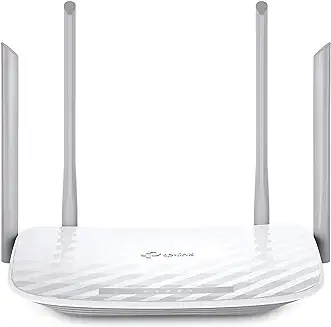
Description
The TP-Link Archer C50 is a dual band wireless cable router that offers Wi-Fi speeds up to 867 Mbps on the 5 GHz band and 300 Mbps on the 2.4 GHz band. It supports useful features like parental controls, guest Wi-Fi, and VPN.
Key Features
- Dual band speeds up to 867 Mbps on 5 GHz and 300 Mbps on 2.4 GHz
- Parental controls to manage content and access
- Guest Wi-Fi network for visitors
- VPN support for secure remote access
Our Expert Opinion
While the Archer C50 offers good speeds and features for the price, it is not a 5g router. It uses the older AC1200 standard and does not support the fastest 5g wireless speeds. However, it still provides very good performance for most home usage. The parental controls and guest network add convenience.
2. MERCUSYS AX3000 Dual-Band Wi-Fi 6 Wireless Router

Description
The Mercusys AX3000 is a dual-band Wi-Fi 6 wireless router touting speeds up to 2402 Mbps on the 5 GHz band and 574 Mbps on the 2.4 GHz band. It has 3 Gigabit LAN ports, 1 Gigabit WAN port and is geared for gaming and 4K streaming.
Key Features
- Wi-Fi 6 router with dual-band speeds up to 2402 Mbps on 5 GHz and 574 Mbps on 2.4 GHz
- 3 x Gigabit LAN ports, 1 x Gigabit WAN port
- Optimized for gaming, Xbox, PS4, Steam and 4K video
- OFDMA and MU-MIMO technology
Our Expert Opinion
The Mercusys AX3000 brings the latest Wi-Fi 6 standard for faster speeds and advanced technology like OFDMA and MU-MIMO. While not marketed specifically as a 5g router, it does offer excellent 5 GHz performance that can take advantage of emerging Wi-Fi 6 devices. With its gaming/4K optimization and Gigabit ports, it’s ideal for media streaming and online gaming.
3. TP-Link Archer C60 AC1350 Dual Band Wireless
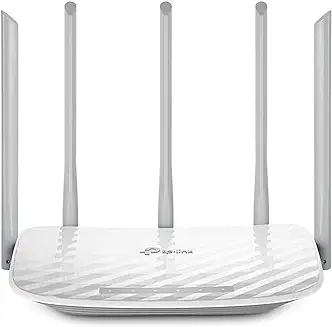
Description
The TP-Link Archer C60 AC1350 router offers combined dual-band Wi-Fi speeds up to 867 Mbps on the 5 GHz band and 450 Mbps on the 2.4 GHz band. It includes useful features like parental controls, guest Wi-Fi and MU-MIMO support.
Key Features
- Dual-band Wi-Fi speeds up to 867 Mbps on 5 GHz and 450 Mbps on 2.4 GHz
- Parental controls and guest Wi-Fi network
- MU-MIMO for simultaneous streaming to devices
- Qualcomm chipset
Our Expert Opinion
The Archer C60 provides very good AC1350 class Wi-Fi speeds and coverage to handle many devices at once. Features like parental controls, guest networking and MU-MIMO make it convenient for family usage. However, it is still based on older Wi-Fi 5 standard instead of latest Wi-Fi 6. Still a cost-effective router for typical use cases.
4. TP-Link Archer C80 AC1900 Dual Band Wireless
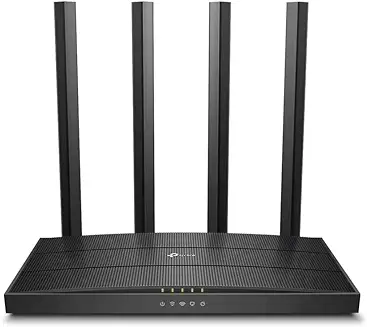
Description
The TP-Link Archer C80 is an AC1900 class dual-band wireless router offering Wi-Fi speeds up to 1300 Mbps on the 5 GHz band and 600 Mbps on 2.4 GHz. Key features include Gigabit ports, MU-MIMO and a 1.2 GHz CPU.
Key Features
- Dual-band Wi-Fi speeds up to 1300 Mbps on 5 GHz and 600 Mbps on 2.4 GHz
- 3 x Gigabit LAN ports, 1 x Gigabit WAN port
- MU-MIMO for simultaneous streaming
- Powerful 1.2 GHz dual-core CPU
Our Expert Opinion
While not specifically a 5g router, the Archer C80 provides excellent AC1900 class wireless performance with its high speed 5 GHz band. With Gigabit ports and MU-MIMO support, it can easily handle numerous devices streaming and gaming at once. The 1.2 GHz CPU gives it plenty of processing power for the latest networking technology.
5. Dealfreez Mijia WiFi Router
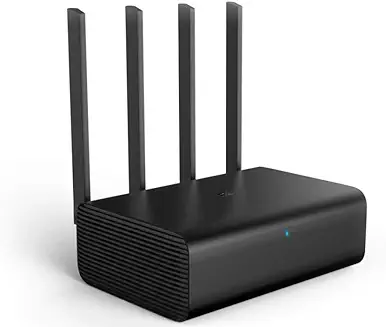
Description
The Dealfreez Mijia WiFi Router HD R3D is a dual-band AC2600 router with speeds up to 1733 Mbps on 5 GHz and 800 Mbps on 2.4 GHz. It includes 1 TB of built-in storage space.
Key Features
- Dual-band AC2600 router
- WiFi speeds up to 1733 Mbps on 5 GHz and 800 Mbps on 2.4 GHz
- 1 TB built-in storage space
- SD card support
Our Expert Opinion
While not specifically marketed as a 5g router, the Dealfreez Mijia WiFi Router HD R3D provides excellent high-speed performance with its AC2600 dual-band Wi-Fi capabilities. The fast 5 GHz band can take advantage of the latest devices’ capabilities. The built-in 1 TB of storage sets it apart by allowing centralized storage on the network.
6. MERCUSYS AX1800 Dual-Band Wi-Fi 6 Router
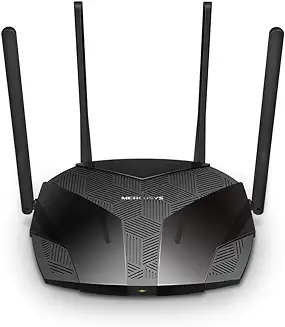
Description
The Mercusys AX1800 is a dual-band Wi-Fi 6 router offering speeds up to 1201 Mbps on the 5 GHz band and 574 Mbps on the 2.4 GHz band. It has 3 Gigabit LAN ports and touts gaming/4K optimization.
Key Features
- Wi-Fi 6 router with dual-band speeds up to 1201 Mbps on 5 GHz and 574 Mbps on 2.4 GHz
- 3 x Gigabit LAN ports
- Optimized for gaming and 4K video
- OFDMA and MU-MIMO technology
Our Expert Opinion
While not specifically labeled as a 5g router, the Mercusys AX1800 does utilize the latest Wi-Fi 6 standard for improved performance. Its fast 5 GHz band with Wi-Fi 6 technology offers speeds rivalling a 5g router. Combined with gaming/4K enhancements and Gigabit LAN ports, it delivers blazing throughput with low latency for gaming and streaming media.
7. MERCUSYS AC1200 Wireless Dual Band Router
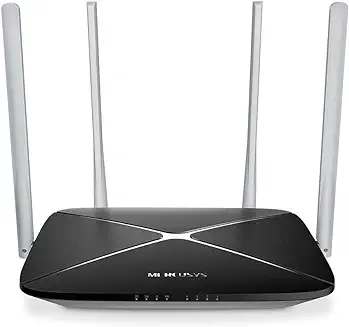
Description
The Mercusys AC1200 Wireless Dual Band Router offers 2.4GHz and 5GHz dual-band connectivity with Wi-Fi combined speeds up to 1200 Mbps. It utilizes four 5dBi omnidirectional antennas for expanded coverage.
Key Features
- Dual-band router with Wi-Fi speeds up to 1200 Mbps
- Four 5dBi omnidirectional antennas
- 2.4GHz and 5GHz concurrent dual-band
- Wi-Fi clone for easy setup
Our Expert Opinion
While the Mercusys AC1200 isn’t specifically marketed as a 5g router, its high-speed 5GHz band can provide improved performance with newer devices compared to older 2.4GHz-only routers. However, the Wi-Fi 5 standard and AC1200 class speeds are slower versus latest Wi-Fi 6 and AC2600+ routers. But it still offers very good value for basic usage.
8. Tenda AC10 AC1200 Wireless Smart Dual-Band Gigabit WiFi Router
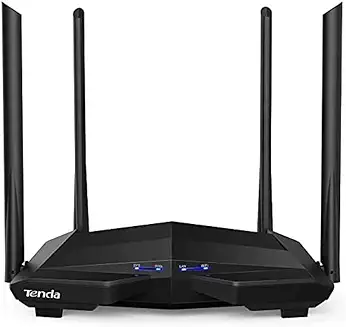
Description
The Tenda AC10 AC1200 is a dual-band wireless router with speeds up to 867 Mbps on the 5 GHz band and 300 Mbps on the 2.4 GHz band. Useful features include MU-MIMO, VPN server, WiFi scheduling and Gigabit ports.
Key Features
- Dual-band router with Wi-Fi speeds up to 867 Mbps on 5 GHz and 300 Mbps on 2.4 GHz
- MU-MIMO for simultaneous device streaming
- Built-in VPN server
- WiFi schedule for managing access times
- 4 x Gigabit LAN ports
Our Expert Opinion
The Tenda AC10 brings very good AC1200 class dual-band speeds along with nice extras like a VPN server, WiFi scheduling and Gigabit ports uncommon at this price. However, it lacks some of the latest advancements like Wi-Fi 6 support found on premium routers. Still it makes an excellent budget-friendly choice.
9. TP-Link XC220-G3 AC1200 Wireless XPON Fiber Router
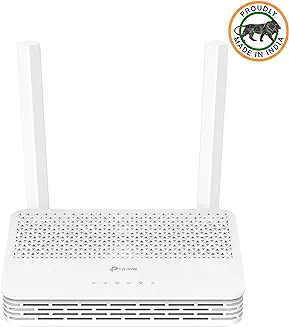
Description
The TP-Link XC220-G3 AC1200 fiber optic router promises combined Wi-Fi speeds up to 1.2Gbps using dual-band technology with 300Mbps on 2.4GHz and 867Mbps on 5GHz bands. It features Gigabit ports, EasyMesh and easy setup.
Key Features
- Integrated XPON fiber router and Wi-Fi
- Up to 1.2Gbps Wi-Fi speeds with 300Mbps on 2.4GHz and 867Mbps on 5GHz
- Gigabit WAN/LAN ports
- Works with any XPON OLT
- EasyMesh and easy setup
Our Expert Opinion
While not specifically marketed as a 5g router, the TP-Link XC220-G3 still provides very fast fiber optic WAN connectivity along with AC1200 class dual-band Wi-Fi speeds topping out at 867Mbps on 5GHz that can handle latest devices. EasyMesh support allows combining multiple nodes for whole-home coverage. Lacking Wi-Fi 6 but solid choice balancing cost and performance.
10. Netlink HG323DAC Dual Band Fibernet Wifi Router
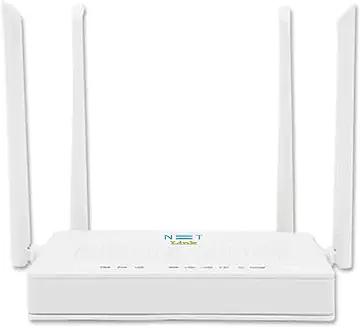
Description
The Netlink HG323DAC is a fiber optic Wi-Fi router promising ultrafast speeds up to 1250Mbps on the 5GHz band and 300Mbps on 2.4GHz. It includes 2 Gigabit ports, MU-MIMO technology, 4 antennas and a 3 year warranty.
Key Features
- Integrated fiber Wi-Fi router
- Up to 1250 Mbps on 5 GHz and 300 Mbps on 2.4 GHz
- 2 x Gigabit LAN ports
- MU-MIMO technology
- 4 external antennas
Our Expert Opinion
Without specific 5g branding, the Netlink HG323DAC still delivers excellent high-speed performance by combining ultrafast fiber connectivity with AC1200 class dual-band Wi-Fi. While lacking latest Wi-Fi 6 standard, the very fast 5GHz band can take advantage of newer devices’ capabilities. Also provides strong Wi-Fi coverage via 4 antennas and MU-MIMO streaming.
Feature Comparison for 5g router in India
| Product | Key Features |
|---|---|
| TP-Link Archer C50 | AC1200, Dual-band, Parental controls |
| Mercusys AX3000 | Wi-Fi 6, AX3000 speeds, Gaming optimization |
| TP-Link Archer C60 | AC1350, Dual-band, Guest Wi-Fi |
| TP-Link Archer C80 | AC1900, Gigabit ports, MU-MIMO |
| Dealfreez Mijia HD R3D | AC2600, 1 TB storage |
| Mercusys AX1800 | Wi-Fi 6, Gaming/4K streaming |
| Mercusys AC1200 | AC1200, Four antennas |
| Tenda AC10 | AC1200, VPN server |
| TP-Link XC220-G3 | Fiber router, EasyMesh |
| Netlink HG323DAC | Fiber router, 1250 Mbps 5 GHz |
How to Choose the Best 5g Router
With 5g mobile networks still rolling out regionally, most “5g routers” are actually Wi-Fi 6 or Wi-Fi 5 routers utilizing emerging standards for improved wireless performance. When selecting a router marketed as 5g, consider the following:
- Wi-Fi Standard – Look for the latest Wi-Fi 6 routers which offer faster speeds, lower latency, more bandwidth and ability to handle more devices than Wi-Fi 5.
- 5 GHz Performance – The 5 GHz band can deliver faster speeds to newer devices versus crowded 2.4 GHz channels. AX class routers provide over 1 Gbps on 5 GHz.
- Ports – Look for Gigabit WAN and LAN ports to avoid bottlenecks. Having at least three downstream LAN ports provides needed expansion room.
- Processor – A 1.5 GHz+ quad-core processor has enough power to handle the extra processing demands of technologies like MU-MIMO and maximum VPN encryption.
Different Types of 5g Home Routers
As 5g coverage expands, we’ll see more routers integrating true cellular 5g connectivity instead of only improved Wi-Fi performance. For now, most “5g routers” fall into two main categories:
Wi-Fi 6 Routers – Though lacking integrated 5g modem, Wi-Fi 6 routers utilize 802.11ax standard for faster wireless speeds, increased capacity, lower latency and ability to handle 100+ devices per node.
Fiber Optic Routers – Integrates fiber optic internet delivery promising nearly limitless bandwidth with ultrafast speeds up to 5 Gbps. Can be combined with Wi-Fi 6 for lightning-quick wireless connectivity rivalling future 5g deployment.
Guide to Usage, Maintenance and Care
Follow these tips to get the most from your router and keep it running optimally for years of service:
- Position centrally in your home for best coverage across all rooms
- Keep away from potential sources of interference like microwaves
- Regularly check for and install latest firmware updates
- Reboot monthly to flush memory caches and refresh operation
- Reset to factory settings if experiencing connectivity or speed issues
- If including external antennas, position vertically at 90 degree angles for optimal coverage
- DON’T attempt to service its internal components yourself
FAQs about 5g router
Q. How is a 5g router different from other routers?
A 5g router utilizes the latest 5g cellular network standard for extremely fast internet connectivity supporting peak speeds over 1 Gbps. Most “5g routers” currently are Wi-Fi 6 or fiber optic routers with improved wireless performance versus older 4G routers.
Q. Do I need a 5g phone/plan to use a 5g router?
A. No, most 5g routers utilize Wi-Fi 6 or fiber optics instead of cellular 5g connectivity. They provide faster Wi-Fi speeds and capacity for many devices, without needing a 5g cellular plan. Some emerging hybrid routers will add true 5G as coverage expands.
Q. How much faster is a 5G router than previous routers?
A. Early 5G deployment promises peak download speeds 100x faster than 4G LTE networks, exceeding 1 Gbps. Most current “5G routers” use Wi-Fi 6 for wireless speeds up to 40% faster than Wi-Fi 5, or fiber optics delivering up to 5 Gbps wired speeds.
Q. What is the range of a typical 5G router?
A. Wi-Fi 6 5G routers provide a similar indoor range to Wi-Fi 5 routers, typically covering 1,500 – 3,000 sq. ft. on the 2.4GHz band and 500-1,000 sq. ft. on 5GHz. Adding mesh nodes or range extenders can expand coverage across very large homes.
Q. Is a 5G router secure enough for online banking and shopping?
A. Yes, leading router brands incorporate robust wireless encryption along with firewall protection and additional security layers to create very secure local networks safe for handling financial transactions and sharing sensitive data at home.
Q. Do I need a 5G router if I don’t subscribe to 5G internet plans?
A. Wi-Fi 6 and fiber optic routers branded as “5G” can still tremendously accelerate Wi-Fi speeds and capacity without needing 5G internet. They futureproof your network for when 5G plans become available locally.
Conclusion
If stagnant internet speeds and spotty Wi-Fi coverage currently has you frustrated, these emerging “5G routers” can provide a big boost using existing connections. Technologies like Wi-Fi 6 and fiber optics send wireless performance into the next generation. Just make sure to match capabilities with your household needs and budget.
While 802.11ax routers surpass previous standards, adding more simultaneous streams soon, don’t futureproof forever as 6G looms by 2030. And leading brands update models annually. So purchasing last year’s flagship risks quicker obsolescence.
Carefully weigh specs and features before overspending. For moderate usage, budget Wi-Fi 6 and fiber routers deliver blazing speeds reasonably. More Extreme streaming/gaming needs require top-shelf components driving costs higher. But unnecessary extras waste money better saved for future upgrades when 6G goes mainstream.
Whichever option you choose, say goodbye to buffering wheels and lag today while priming your home for the coming 5G revolution! Your streaming, gaming and smart home devices will thank you profusely.

Product prices and availability are subject to change. Any price and availability information displayed on merchant's site at the time of purchase will apply to the purchase of these products. HappyCredit is a participant in the Amazon Services LLC Associates Program, an affiliate advertising program. As part of this program, we may earn commission from qualifying purchases made through the affiliate links provided on this website. We only promote products on Amazon that we genuinely believe are of high quality and value to our audience. The inclusion of affiliate links does not influence our editorial content or product recommendations. Our primary goal is to provide useful information and help you make informed purchasing decisions.
Certain portions of the text in this article might have been created using AI tools and subsequently edited by the author to improve the overall quality and clarity of the content for readers.
![5G Routers in India: Boost your WiFi Speed [August, 2024] 5G Routers in India: Boost your WiFi Speed [August, 2024]](https://happycredit.in/cloudinary_opt/blog/5g-router-bhf2j.webp)









